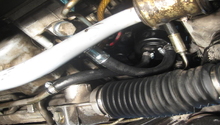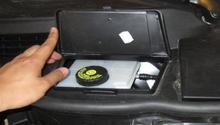Mini Cooper 2001-2006: How to Change Power Steering Fluid
Power steering fluid is simply a type of hydraulic fluid used by the power steering pump to supply pressure inside of the steering rack and aid the driver in turning the wheels. Over time, excessive heat buildup in the power steering system will degrade the fluid and, if left unchecked, can cause the formation of sludge, deposits, and eventual power steering failure. A regular fluid flush will cleanse the system and restore the needed additives to keep the power steering working at its best.
This article applies to the Mini Cooper and Cooper S (2001-2006).
The power steering fluid in the Mini Cooper is said to be a "lifetime" fluid capable of lasting the life of the vehicle; but if you were to examine the fluid in your power steering reservoir, chances are you would be surprised with how dirty it is. The Mini uses a fairly unique power steering setup that eliminates the traditional engine-driven pump in favor of an electric unit. Unfortunately, it is tightly crammed in the engine bay next to the exhaust manifold, which can cause significant heat buildup and premature failure without proper maintenance. The power steering fluid is not only used for hydraulic action in the steering system, but also has additives that condition internal seals, neutralize acids, and fight against corrosion. To ensure proper protection of the power steering system and increase longevity, it is recommended that the power steering fluid be changed by the 100,000 mile mark, but many suggest flushing every 30,000 miles. This article will outline how to replace the power steering fluid in the 2001 to 2006 Mini Cooper and Cooper S models.

Materials Needed
- Turkey baster or large syringe
- Screwdriver
- Pliers
- Barbed union and length of hose
- Catch pan
- Shop rags
- CHF 11S Pentosin power steering fluid
Attention!
Pentosin hydraulic fluid is known to be corrosive to the finish of your vehicle. Clean any spilled fluid immediately!
Method One
There are two common ways to handle changing the power steering fluid, this is the first.
The first and easiest way to freshen-up the power steering fluid is to simply replace the fluid contained in the power steering fluid reservoir. By simply extracting the old fluid from the reservoir and refilling with fresh fluid, approximately 50-60% old fluid will be removed. If you prefer to take things a step further, you can work the steering wheel back and forth several times with the car running to circulate the fluid before performing another fluid extraction from the reservoir. Draining the reservoir in this fashion a couple of times will achieve an 80-90% flush and replenish precious additives to the residual power steering fluid left in the system.
- Find the power steering fluid reservoir located against the firewall in the center of the engine bay.
- Wipe any residual dirt and debris from the top of the reservoir cap to prevent contaminants from entering the power steering system. Remove the cap (dipstick).
- Fill the reservoir to the full mark as indicated on the dipstick.
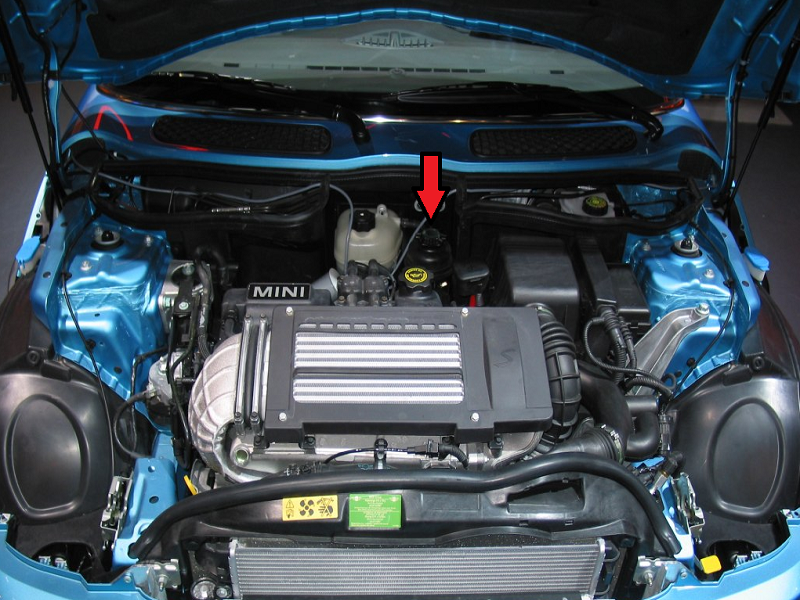
Figure 1. Power steering fluid reservoir locations. 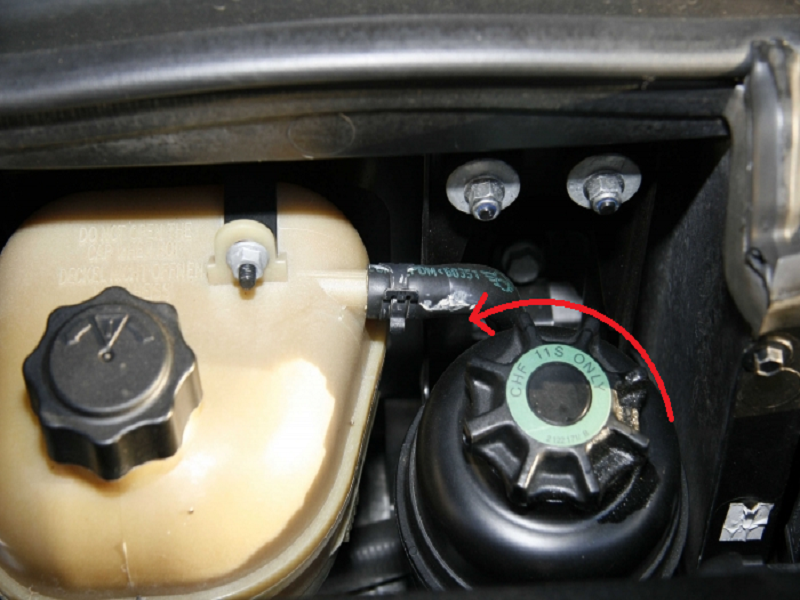
Figure 2. The reservoir dipstick cap. Use a turkey baster or syringe to suck out as much fluid from the reservoir as possible. 
Figure 3. Remove excess fluid using a turkey baster. 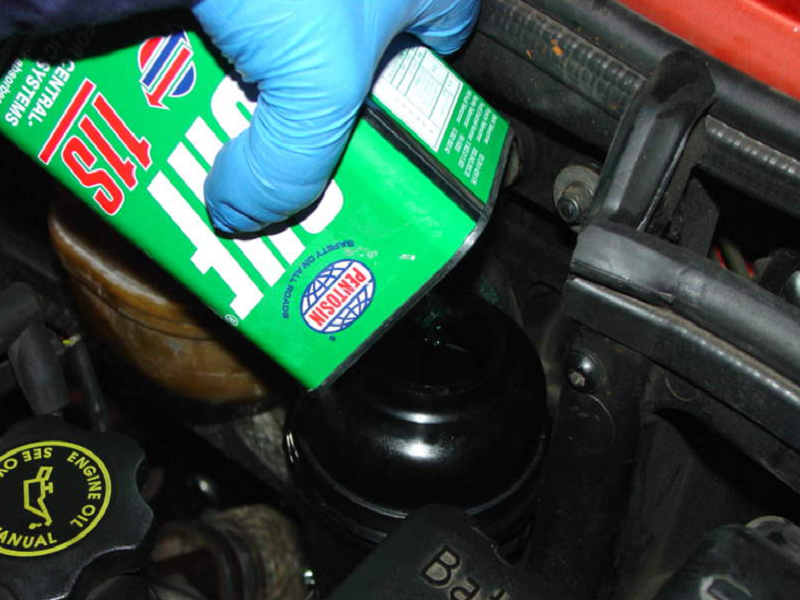
Figure 4. Fill with new fluid.
- Install the reservoir cap/dipstick. At this point you have the option of leaving the fluid as is or starting the vehicle and working the steering wheel back and forth to circulate the fluid before again performing the procedure outlined above. Figure 5 shows how to check the fluid level on the dipstick.
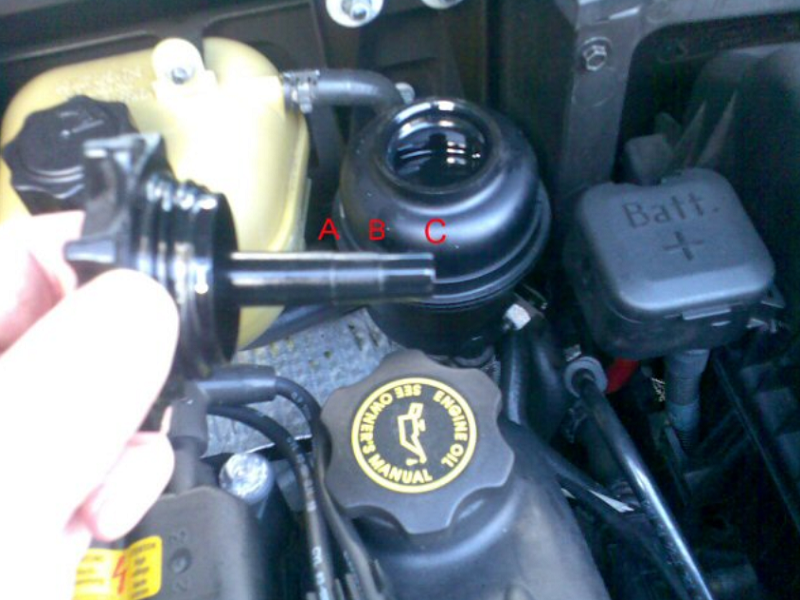
Pro Tip
The dipstick has two lines to indicate the power steering fluid level. As shown above, A is the full mark when the fluid is hot, and B is the full mark when the fluid is cold.
Method Two
The second method of flushing the power steering system is a bit more involved, but will allow for a more thorough removal of the old fluid. This procedure can be accomplished by yourself, but is easiest with a extra set of hands on tap.
- Remove the reservoir cap and suck out the old fluid as outlined in Method One.
- Disconnect the fluid return hose from the reservoir and cap off the nipple. Removing the reservoir from the support bracket can aid in hose removal.
- Route the return hose into a suitable catch container. Since the return hose is quite short, adding a barbed union and additional piece of hose will give you adequate length to route the hose into a catch can.
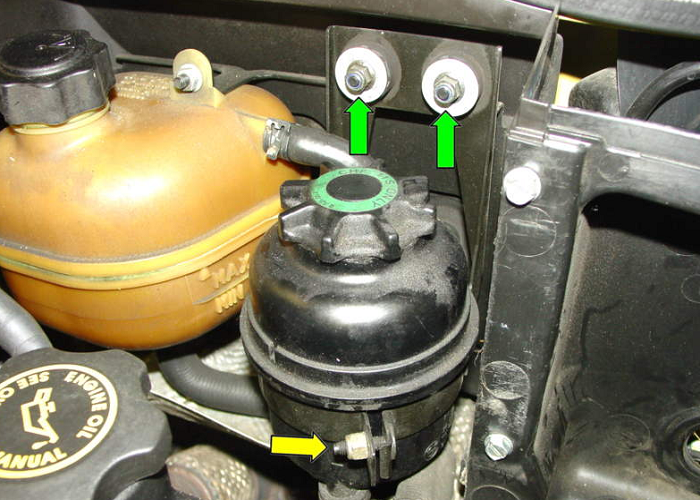
Figure 6. Reservoir bracket fasteners. 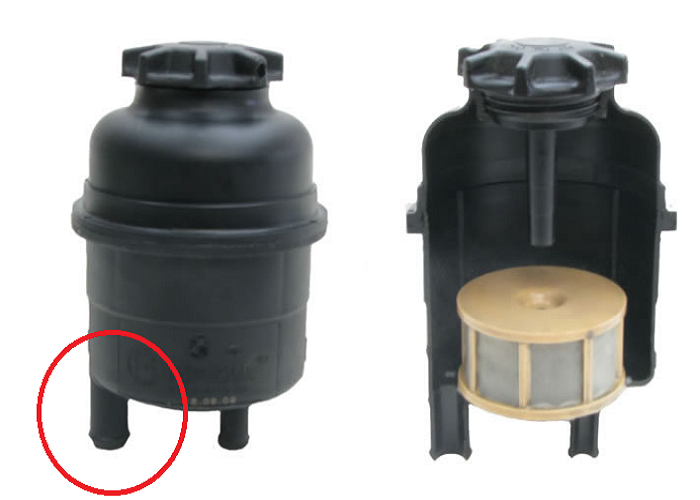
Figure 7. Reservoir return hose nipple.
- Fill the reservoir with fresh power steering fluid.
- The next step requires starting the engine and moving the steering wheel to circulate the power steering fluid. If you have a helper, have them fill the power steering fluid reservoir while you start the car and turn the wheels. If you are completing this by yourself, only let the engine run a few seconds at a time before shutting it off to top off the fluid level in the reservoir. It is important that the reservoir not run dry, as this will introduce air into the system.
- After clean fluid emerges from the return hose, drain the reservoir and reinstall the return hose. Refill the reservoir with fresh fluid.
Related Discussions
- Power Steering Fluid Flush? - NorthAmericanMotoring.com
- Power Steering Fluid...When to Fill? - NorthAmericanMotoring.com
- Power Steering Fluid - NorthAmericanMotoring.com

